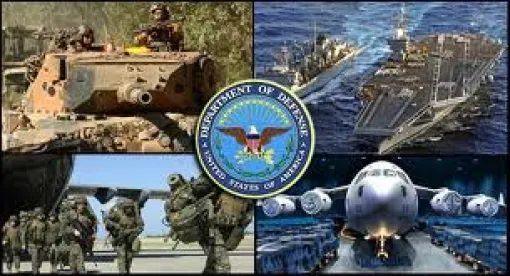The Department of Defense (DoD) is considering a proposed rule that would prevent defense contractors from promising future Independent Research & Development (IR&D) investments as a way to gain a competitive price advantage in DoD procurements. Although DoD’s rulemaking is in its early stages, defense contractors with substantial IR&D programs should monitor these developments closely, as DoD seems poised to frustrate yet another incentive for pursuing defense-related IR&D.
DoD’s Advanced Notice of Proposed Rulemaking
Last week, on February 8th, DoD announced it is considering a proposed rule that would change the way prospective IR&D projects are evaluated in competitive procurements. Specifically, DoD:
[I]s considering an approach whereby solicitations would require offerors to describe in detail the nature and value of prospective IR&D projects on which the offeror would rely to perform the resultant contract. Then, as a standard approach, DoD would evaluate proposals in a manner that would take into account that reliance by adjusting the total evaluated price to the Government, for evaluation purposes only, to include the value of related future IR&D projects.
DoD invited public comment and noted that it is most interested in understanding whether “the planned approach” is consistent with “the objective of making IR&D an allowable cost.”
What Prompted DoD To Consider This Proposed Change?
In analyzing the regulatory changes DoD is considering, it is useful to understand the origins of the “issue” DoD is attempting to address. Although DoD has not said so publicly, its concerns about the evaluation of proposed IR&D investments in competitive procurements may have been prompted by the high-profile bid protest proceedings described in Raytheon Co. v. U.S. et al., CAFC No. 2015-5086 (Oct. 23, 2015). In that case, two disappointed bidders (Northrop Grumman and Lockheed Martin) filed a series of protests at the Government Accountability Office (GAO) in late 2014. The protests alleged, among other grounds, that the Air Force engaged in misleading and unequal discussions regarding the use of future IR&D projects as a means to reduce the offerors’ evaluated price for the procurement.
According to the protesters, the Air Force had informed the eventual contract awardee (Raytheon) that it could offer “cost reductions” based on promised future IR&D investments in order to reduce its evaluated price, but had told the disappointed bidders that they could not. In January 2015, GAO notified the parties it was inclined to sustain the protest on misleading and unequal discussions grounds. The Air Force then took voluntary corrective action and reopened the bidding process. Raytheon filed suit in the U.S. Court of Federal Claims (COFC) challenging the Air Force’s decision to do so. COFC ultimately agreed with GAO that the Air Force’s actions were rational and the U.S. U.S. Court of Appeals for the Federal Circuit later affirmed.
In April 2015, while the Raytheon protest was pending at COFC, DoD issued the “Implementation Directive for Better Buying Power 3.0.” In that directive, DoD noted that:
Reviews of [IR&D] spending indicate that a high fraction of [IR&D] is being spent on near-term competitive opportunities and on de minimis investments primarily intended to create intellectual property. A problematic form of this use of [IR&D] is in cases where promised future [IR&D] expenditures are used to substantially reduce the bid price on competitive procurements. In these cases, development price proposals are reduced by using a separate source of government funding (allowable [IR&D] overhead expenses spread across the total business) to gain a price advantage in a specific competitive bid. This is not the intended purpose of making [IR&D] an allowable cost (emphasis added).
To address this “problematic” issue, DoD tasked the office of Defense Procurement and Acquisition Policy (DPAP) to “develop proposed regulatory or statutory change[s] that would preclude use of substantial future [IR&D] expenses as a means to reduce evaluated bid prices in competitive source selections” by mid-2015.
DoD Wants More Information About Contractors’ IR&D Projects, But Why?
By requiring contractors to “describe in detail the nature and value of prospective IR&D projects,” it is clear DoD wants more information about contractors’ future IR&D expenditures. DoD made those intentions even clearer this week when it issued a separate proposed rule announcing that it will no longer reimburse annual IR&D costs unless contractors provide detailed information to DoD about their IR&D projects. But what is less clear, at least for now, is why DoD wants this information and how DoD intends to use it.
On the surface, DoD says it is mulling a proposed rule that will standardize the way it assesses the value of an offeror’s prospective IR&D projects on a particular contract. But some contractors may ask, and understandably so–what else does DoD intend to do with detailed information about my plans for future IR&D projects? For example, contractors may ask:
-
Will DoD ask contractors for information about other contracts that may benefit from proposed IR&D so that it can disallow IR&D costs based on the principles established in ATK Thiokol, Inc. v. United States, 598 F.3d 1329 (Fed. Cir. 2010) (holding that IR&D costs are allowable indirect costs unless they are “specifically required” by the terms of a particular contract)?
-
Will DoD use the detailed information in contractors’ proposals about the “value of prospective IR&D projects” to a particular DoD contract to challenge the allocation of IR&D costs on indirect basis?
-
Will DoD use the detailed information in contractors’ proposals to develop future solicitation requirements in order to secure greater intellectual property rights than it would otherwise be entitled to?
For now, DoD has not answered these kinds of questions and only time will tell if the proposed rule is intended to achieve goals beyond those reflected in the February 8th advanced notice.
Defense-Contracting Community: Let Your Voice Be Heard!
DoD’s latest IR&D proposal comes at a time when the Pentagon is working hard to establish relationships with a Silicon Valley tech community that historically has been wary of Government bureaucracy and “intellectual property grabs.” And while DoD has not shared many details about the “standard” IR&D-evaluation approach it is considering, any approach that materially curtails the benefits of maintaining a robust IR&D program, or dis-incentivizes participation on particular DoD procurements, will likely be met with both skepticism and resistance from the defense-contracting community and Silicon Valley alike.
Perhaps for that reason, and to the Pentagon’s credit, DoD has so far been careful to not change too much, too fast in the area of defense IR&D. For example, DoD’s February 8th proposal was previewed in Better Buying Power 3.0 in April 2015, was issued in the form of an advanced notice of proposed rulemaking, solicits written comments from the public, and announces that DoD will hold a public meeting to hear the views of interested parties.
Members of the defense-contracting community, including contractors and trade associations, should strongly consider submitting comments and/or appearing at the public meeting, as those may be the last opportunities to help shape this aspect of the potentially significant IR&D changes that lie ahead. Written comments on DoD’s advanced notice of proposed rulemaking are due on or before April 8, 2016, and the public meeting will be held on March 3, 2016 in Washington, D.C.





 />i
/>i

